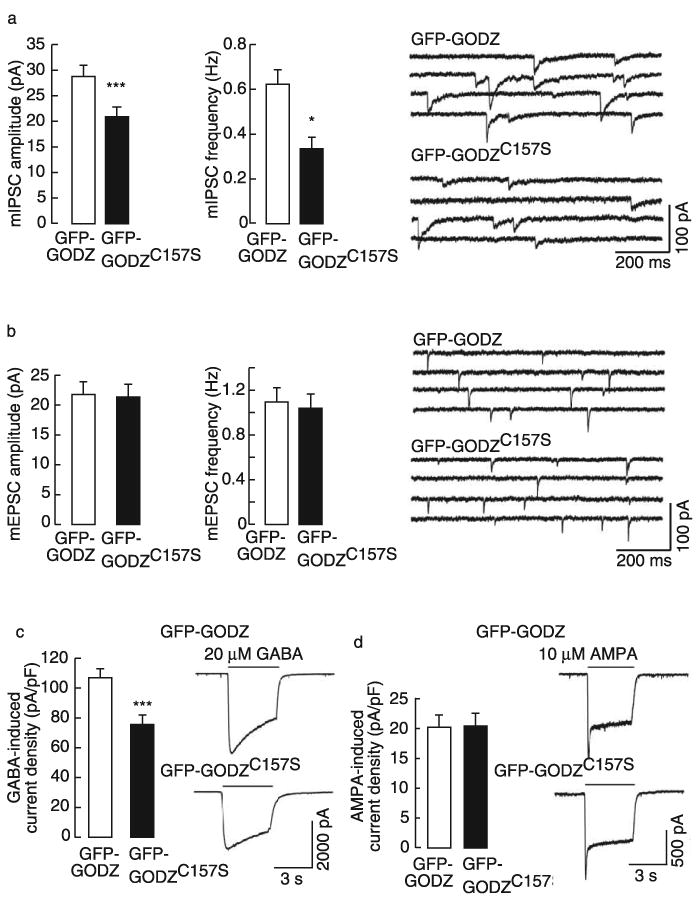Figure 6.

Analyses of functional consequences of dominant-negative GODZ on GABAergic and glutamatergic transmission. GABAergic and glutamatergic miniature postsynaptic currents as well as GABA- and AMPA-induced whole-cell currents were recorded from transfected hypothalamic neurons (12–15 DIV). a, Analyses of mIPSCs of neurons transfected with dominant-negative GFP-GODZC157S revealed a significant reduction in both the amplitude (20.3 ± 1.4 pA) and frequency (0.31 ± 0.08 Hz; n = 26) of mIPSCs compared with matched GFP-GODZ-transfected controls (29.7 ± 2.0 pA, p < 0.001; 0.63 ± 0.10 Hz, n = 25, p < 0.05). b, In contrast, the mEPSC amplitude (21.9 ± 0.8 pA) and frequency (1.00 ± 0.24 Hz; n = 18) of GFP-GODZC157S-transfected neurons were indistinguishable from GFP-GODZ controls (22.4 ± 1.8 pA, 1.13 ± 0.24 Hz; n = 15; p > 0.05). c, The GABA (20 μm)-induced whole-cell current density in GODZC157S-transfected neurons (75.7 ± 4.4 pA/pF; n = 17) was significantly reduced compared with GFP-GODZ controls (107.0 ± 5.1 pA/pF; n = 14; p < 0.001). d, The AMPA (10 μm)-induced current density was unchanged in GFP-GODZC157S transfected neurons (19.1 ± 2.2 pA/pF; n = 15) compared with GFP-GODZ controls (19.8 ± 2.4 pA/F; n = 17; p > 0.05). Representative current traces are shown on the right of the respective bar diagrams. Data represent means ± SE (*p < 0.05, **p < 0.01, ***p < 0.001, Student's t test).
